Swimming is a fantastic activity to take up as exercise and have fun in the water. Practicing different swimming strokes can improve overall swimming efficiency, muscle strength, and endurance. Of course, you also add variety to the workout and make the swimming sessions more engaging. All swimming classes encourage students to learn at least the four major swimming strokes we discuss in this article.
After you have mastered the basics of swimming, like breathing, floating, and general kicks and arm movements required, you may begin learning the different strokes.
Let’s take a look at these four major swimming strokes: front crawl, backstroke, breaststroke, and butterfly stroke.
Free Style
If someone says they know how to swim but don’t know what stroke they do, they are probably doing one or the other variation of a front crawl. It is the most commonly taught and used swimming stroke and is often referred to merely as “swimming” without specifying a specific stroke.
When you join a swimming class, this will be the first stroke you will learn.
The stroke is characterized by alternating arm movement, with the legs kicking in a flutter or scissor motion. It is an efficient stroke and is the fastest of all strokes.
The front crawl is frequently referred to as the ‘freestyle stroke’ or just ‘freestyle.’ It is because the swimmers typically use the front crawl in freestyle swimming competitions. This category does not restrict stroke choice.
To perform the front crawl, or freestyle stroke, lie on your tummy and alternate arms while kicking your legs. The arm motion should take a full circle with the elbows staying high and the hands never going above it. The upper body should slightly rotate upwards towards the recovery arm (the arm that is out of the water).
As this arm returns to the water, the other hand sweeps the water back, moving towards your hip to break the water surface elbow first. Here, rotate your body slightly to the other side.
You can inhale through the mouth by slightly tilting your head with the body. Only letting half of your face emerge from the water is advised. Start to exhale when you reach back into the water.
Quickly inhale but exhale slowly into the water. You can choose to inhale for every three strokes on alternate sides. It is called bilateral breathing. Or inhale for every other stroke on the same side—unilateral breathing.
Keep your head in a neutral position rather than leaning it too far back or lifting it too high out of the water.
Back stroke
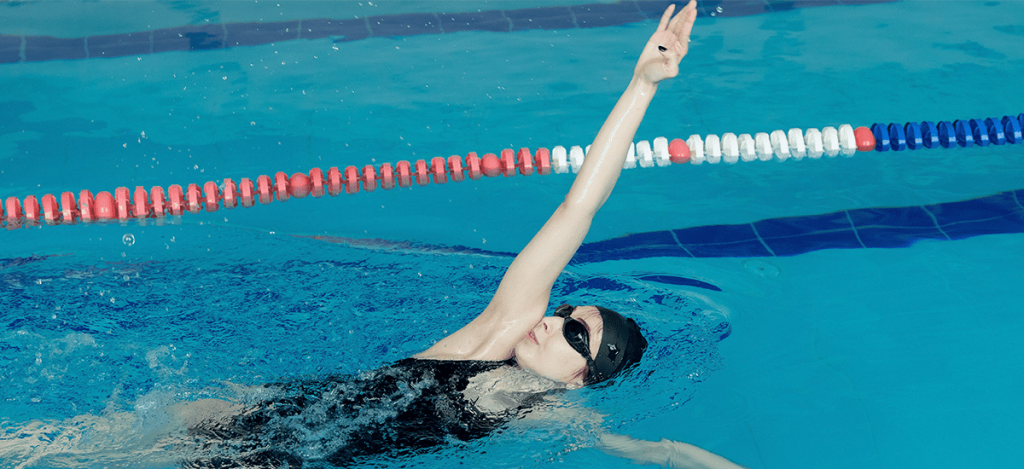
The backstroke is lighter on the body than the other strokes and demands less energy.
Perform backstroke by being on your back in the water. Similar to the front crawl, the arm movements are alternating. Begin the arm movement by bringing one arm over your head, and enter the water above your head with the palm facing outward.
Move your arm outwards and downwards to pull the water towards your hips and exit the water with the palm facing inwards.
Keep your head still and face upwards. Your body will rotate with the arm slightly. Breathing is relatively easy in this stroke since your face will always be outside of water. Ensure a rhythmic breathing pattern.
Breast stroke
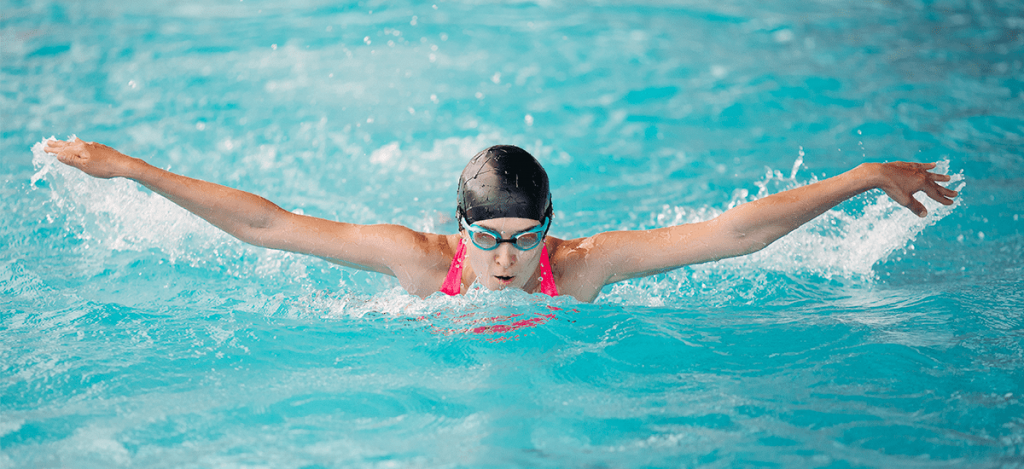
The breaststroke technique is symmetrical—both arms perform the same motion. The same goes for the legs.
This stroke involves three arm movement phases, namely, the catch phase, the pull phase, and the recovery phase.
Start with the catch. Extend the arms together in front of you in the water, palms slightly facing outward, and sweep the water outward and downward. Once past the hip, pull the hands close to your body with the arm bending them at the elbow. With this, you will complete a circular motion.
The recovery is streamlined and happens under your body. Bring the hands together and extend them before you, ready for the next stroke.
Breathe in through your mouth at the end of the catch phase. Your face and shoulders should naturally come out of the water as you enter the pull phase. As you extend the hand forwards for recovery, submerge your head and start exhaling slowly.
Use the whip or the frog kick. Lead this leg movement with your heels. Pull the heel back towards your body and powerfully kick both legs together downward and outward.
Lead with the kick during the recovery phase of the arm. Follow it with the catch phase for efficiency. Do not time the catch or the pull phase with the kick simultaneously. It may slow you down.
Butterfly stroke
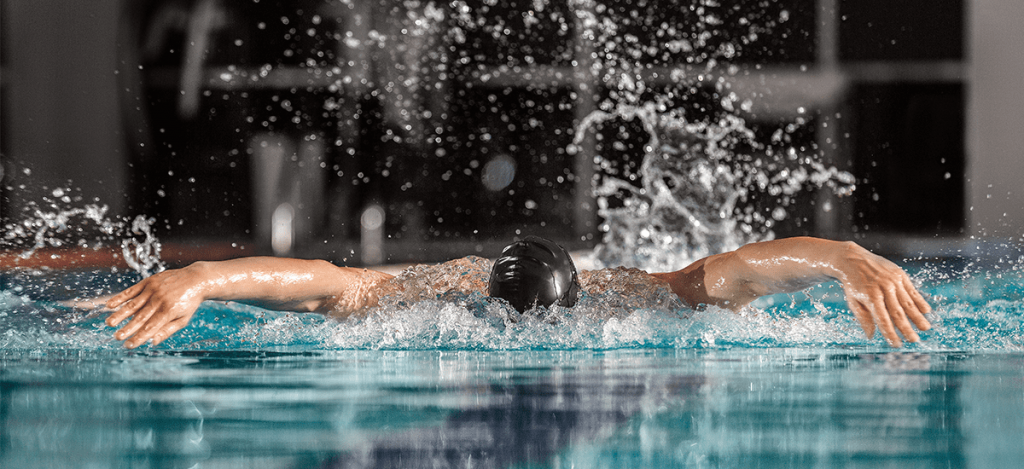
The butterfly stroke technique is a challenging and strenuous movement. It is also a symmetrical stroke.
The arm movement of the butterfly stroke begins with your hands entering the water finger first. As you enter the water, pull the water under you and move your hands towards the hips. Lead with the elbow to break the water surface at the back. The recovery happens outside the water.
During the recovery phase, move the hands in a circular motion outside the water. Now, your arms will be in front of you, ready to enter the water for the next stroke. When you enter, ensure your thumbs are almost touching and extended far in front of you.
Your head and shoulders should naturally come out of the water as you finish the pulling and enter the recovery. Use this time to inhale through your mouth. Once you begin the stroke again, start exhaling.
Have your legs close together for the dolphin kick motion. Two kicks are essential for each stroke. Do it gently when your hands enter the water. Then do it powerfully when your hands exit the water (for the recovery phase). Time kicks perfectly for maximum efficiency.
Aim for smooth and fluid action. Keep your legs together and your arms close to your torso. Keep practicing to build strength and endurance to perfect this challenging stroke.
One stroke could appeal to you more than the other. However, mastering all the strokes and switching between them can keep your swim sessions more engaging and improve your overall fitness.
Practice proper techniques either by yourself or by taking swimming classes to improve your form and performance. With practice and patience, you are sure to master these swimming strokes.
If you are interested in swimming lessons, you may check out the swimming classes on PursueIt. Reach out to book swimming classes for kids and adults. You can also hire a private swimming instructor for focused swim training.
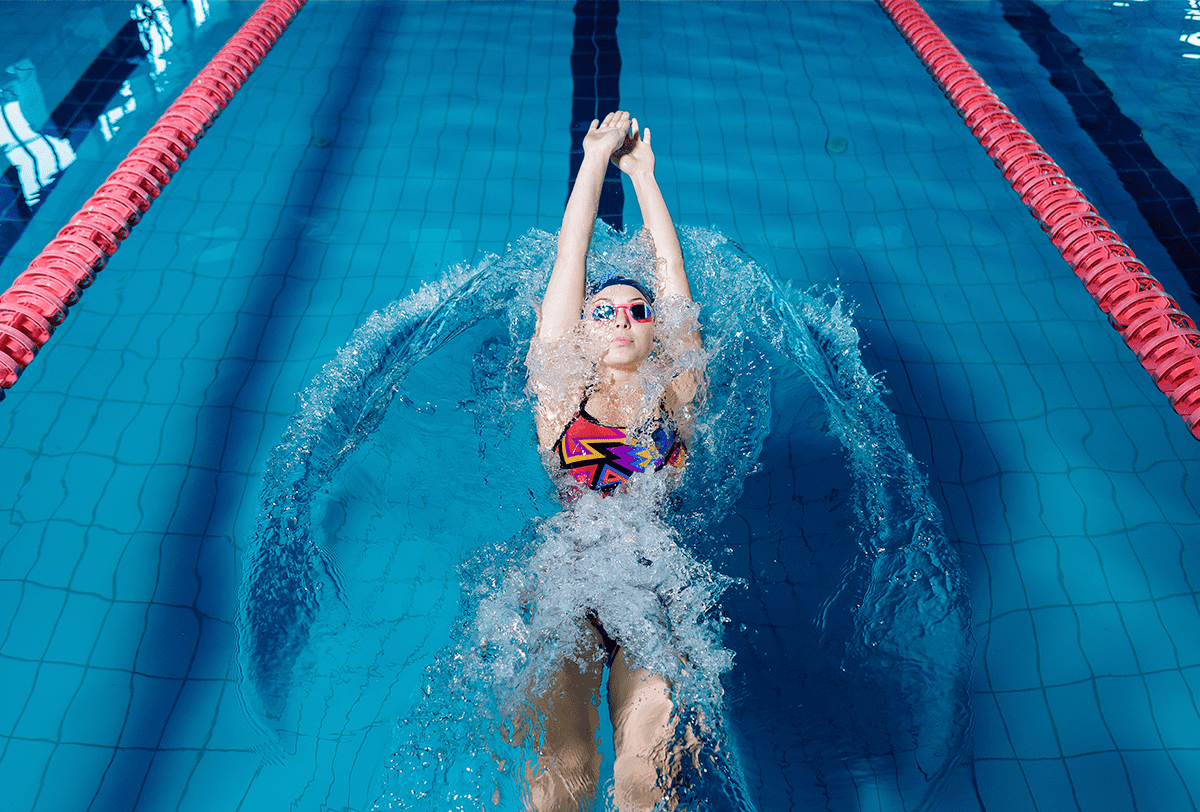
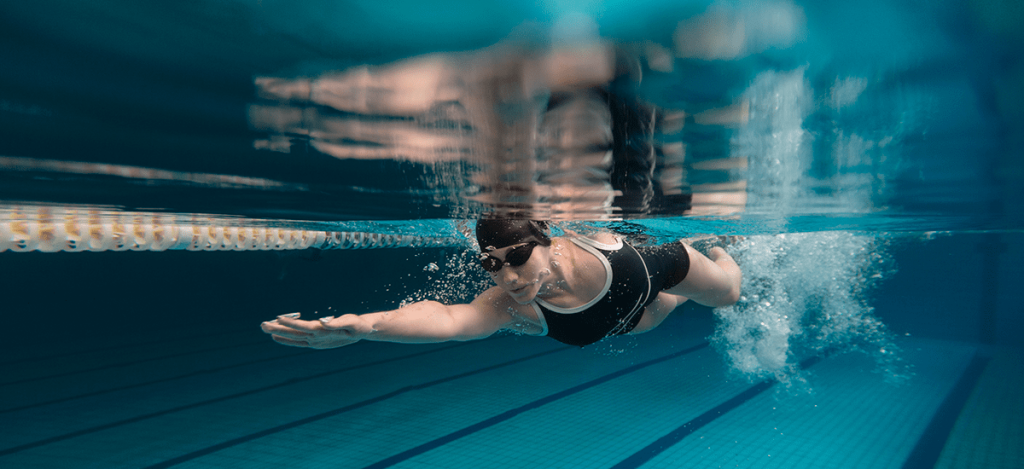



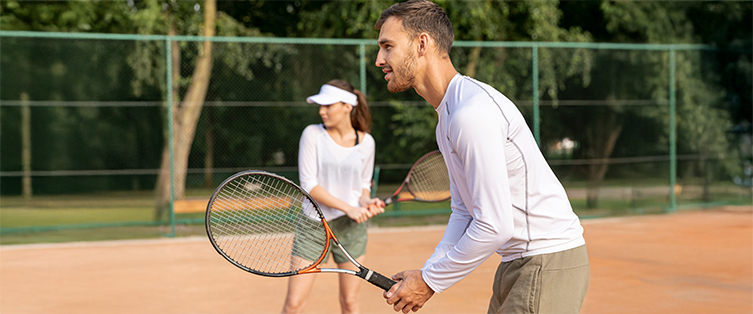
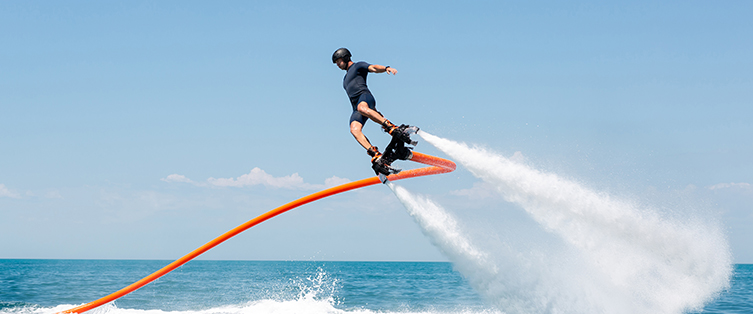
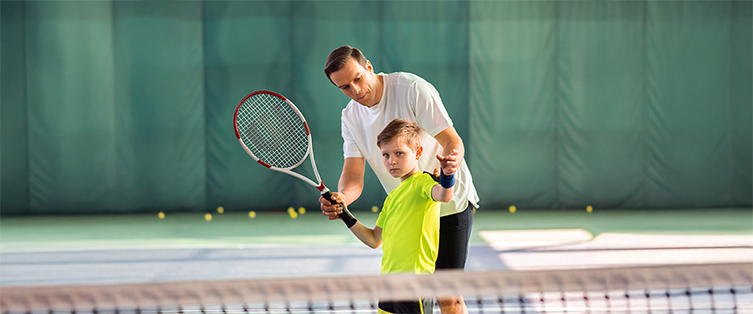
Leave a Reply